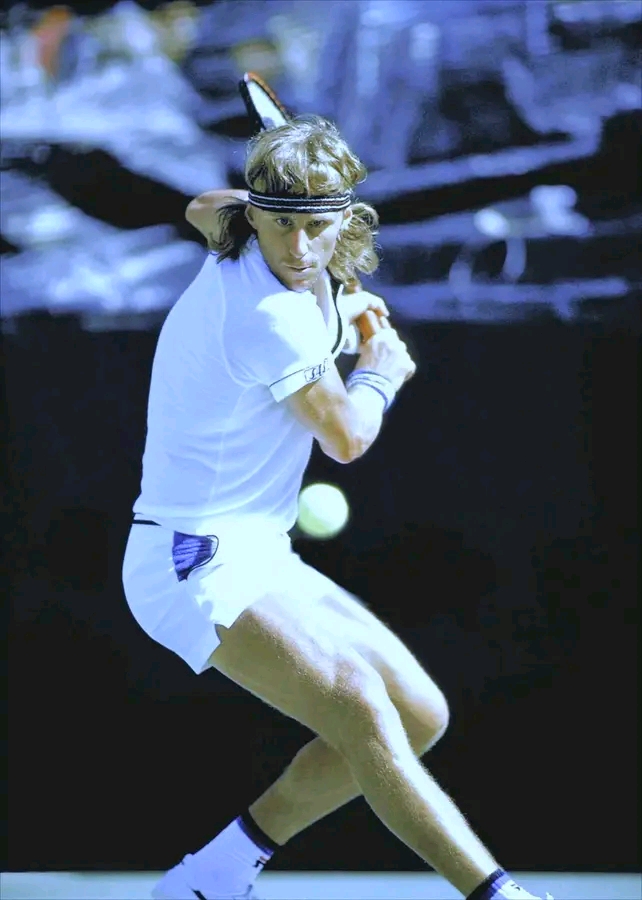US Open 1980: Bjorn Borg’s Determined Quest for Glory in Flushing Meadows
The 1980 U.S. Open remains etched in the history of tennis as one of the sport’s most riveting chapters, not only for the drama that unfolded in Flushing Meadows but also for the presence of Swedish superstar Bjorn Borg. Known worldwide as the “Ice Man” for his calm composure and unshakable concentration, Borg stepped onto the hard courts of the National Tennis Center that September with millions of eyes fixed on him. By then, the five-time Wimbledon champion and four-time French Open winner was the undisputed king of tennis, yet one title continued to elude him: the U.S. Open crown.
The atmosphere at Flushing Meadows was electric. New York fans, always vocal and passionate, flocked in droves to watch Borg in action, eager to witness history. His matches drew not only die-hard tennis enthusiasts but also celebrities, journalists, and sports lovers curious to see whether the Swede could finally conquer the American Grand Slam. Despite his dominance elsewhere, the U.S. Open had proven a stubborn barrier, testing him on both clay and hard courts.
Borg entered the 1980 tournament in peak form. Fresh off his classic Wimbledon victory over John McEnroe just weeks earlier—a match that would go down as one of the greatest ever played—Borg carried confidence, poise, and the aura of a man destined to achieve greatness. Yet, Flushing Meadows presented challenges that extended beyond his opponents. The DecoTurf II hard surface was far less forgiving than the grass of Wimbledon or the red clay of Roland Garros. Its speed and bounce demanded adjustments, favoring aggressive serve-and-volleyers like McEnroe and Jimmy Connors. Borg, however, was not a man to shy away from a fight.
Throughout the early rounds, Borg’s calm efficiency was on full display. With his trademark double-handed backhand and baseline mastery, he dismantled opponents with a mixture of heavy topspin, precision, and unrelenting stamina. His ability to maintain composure, even under intense pressure, reminded spectators why he was hailed as one of the sport’s greatest mental warriors. Every stroke seemed measured, every rally calculated, as though Borg were conducting a symphony with his racquet.
But Borg’s path to the final was anything but a stroll. Each round tested his endurance, both physically and emotionally. The New York crowd, unpredictable and often partisan, added a unique dimension to his matches. While many admired his ice-cool demeanor, others sided with American favorites. Borg’s resilience against both the noise of the crowd and the firepower of his opponents showcased the discipline that had made him a global icon.
By the time Borg reached the latter stages of the tournament, anticipation had reached fever pitch. Fans knew the final was likely to produce another showdown between Borg and McEnroe, a rivalry that was already captivating the world. Their contrasting personalities—Borg’s stoic calm versus McEnroe’s fiery temper—created a theater that transcended tennis.
Indeed, the final lived up to its billing. Under the lights at Flushing Meadows, Borg and McEnroe clashed once again, just as they had at Wimbledon months earlier. The match was a gripping duel of styles: Borg grinding from the baseline with unflinching precision, McEnroe attacking with crisp volleys and audacious shot-making. The tension was palpable, each point played like a battle within a war.
Borg’s determination was clear. Every time McEnroe surged, Borg responded with patience and resilience. His physical conditioning, considered unparalleled at the time, allowed him to stay in rallies that would have drained lesser players. Yet, the margins in tennis are razor-thin, and despite his brilliance, Borg found himself up against a rival who matched his skill with boldness and artistry.
In the end, McEnroe would prevail, capturing the 1980 U.S. Open title and denying Borg yet again. For Borg, it was a bitter disappointment, his second consecutive runner-up finish in New York. But while the trophy slipped away, the match further cemented his legacy. His grace in defeat, his refusal to let frustration break his composure, and the sheer quality of his play won admiration even from the raucous New York crowd.
Reflecting on Borg’s 1980 U.S. Open journey, one is reminded that greatness in sport is not defined solely by victories. Borg’s performances in Flushing Meadows that year embodied resilience, sportsmanship, and an unwavering pursuit of excellence. He showcased the qualities that made him a legend: discipline, poise, and a relentless will to compete at the highest level.
Though the U.S. Open crown would ultimately remain the one major title to escape him, Borg’s efforts in 1980 highlighted the universal appeal of his game. He was more than just a champion; he was a symbol of elegance under pressure, a reminder that even in defeat, there can be triumph.
Looking back, Borg’s presence in New York that year elevated the U.S. Open into a global spectacle. His rivalry with McEnroe captured imaginations and ushered tennis into a new era of visibility and excitement. For fans in Flushing Meadows who witnessed him in action, the sight of the Swedish superstar gliding across the court remains unforgettable.
The 1980 U.S. Open was not the story of a missing trophy. It was the story of a man chasing perfection, battling not just opponents but history itself. And in that quest, Bjorn Borg reaffirmed why his name would forever be spoken with reverence in the annals of tennis.
